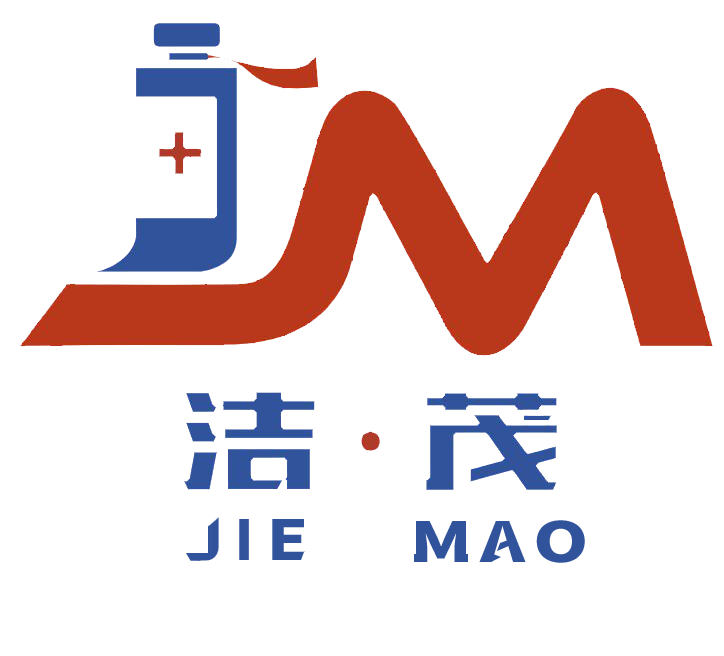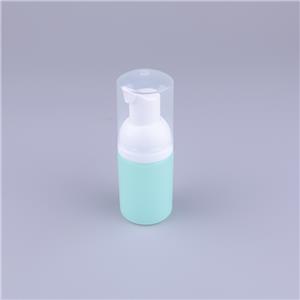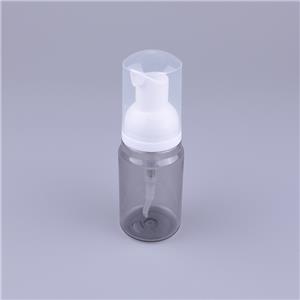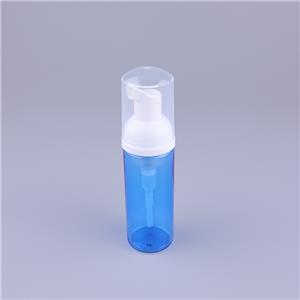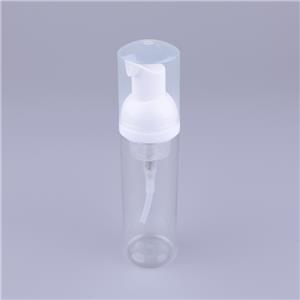- Home
- >
- News
- >
- Public Information
- >
- polypropylene
polypropylene
Polypropylene raw materials: polymer materials with characteristics, production, and diverse applications
Polypropylene (PP) is a thermoplastic resin made by polymerizing propylene monomers. As one of the five universal plastics, it has become an indispensable polymer material in modern industry and daily life since its industrial production in the 1950s due to its excellent comprehensive performance, abundant raw material sources, and low cost. From food packaging to automotive components, from medical devices to building materials, polypropylene is ubiquitous, and its development has witnessed the technological progress and innovation of the polymer materials industry.
1、 Molecular Structure and Basic Characteristics of Polypropylene
The molecular structure of polypropylene is the core factor determining its properties. From a chemical structure perspective, polypropylene is a linear polymer chain formed by the addition polymerization of propylene monomer (CH ₂=CH-CH ∝), with the repeating unit being - CH ₂ - CH (CH ∝) -. According to the spatial arrangement of methyl groups (- CH3) in the molecular chain, polypropylene can be divided into three stereoisomers: isotactic polypropylene, syndiotactic polypropylene, and random polypropylene. Among them, isotactic polypropylene has become the mainstream product in industrial production due to its excellent performance.
In the molecular chain of isotactic polypropylene, methyl groups are neatly arranged on the same side of the main chain, forming a highly ordered crystalline structure, which gives it a series of excellent properties. Firstly, polypropylene has a high melting point, typically between 160-170 ℃, which is much higher than polyethylene (PE). Therefore, it can maintain structural stability at higher temperatures and is suitable for making heat-resistant products such as microwave tableware and hot water pipes. Secondly, the density of polypropylene is relatively low, about 0.90-0.91g/cm ³, making it one of the lowest density varieties among existing plastics. This makes the products made from it lightweight, reducing transportation costs and material consumption.
In terms of mechanical properties, polypropylene has good rigidity and strength, with a tensile strength of 20-40MPa, moderate bending strength and impact strength, which can meet the requirements of most structural components. Meanwhile, polypropylene has excellent chemical stability and good corrosion resistance to chemicals such as acids, bases, and salts. It is insoluble in most organic solvents and can only be corroded by strong oxidants at high temperatures. Therefore, it is suitable for making corrosion-resistant products such as chemical pipelines and storage tanks.
Polypropylene also has excellent processing performance, with a wide range of melt flow rates, and can be produced into different shapes of products through various processing techniques such as injection molding, extrusion, blow molding, and wire drawing. During the processing, polypropylene has good fluidity and short molding cycle, which can improve production efficiency and reduce processing costs. In addition, polypropylene has good electrical insulation performance and weather resistance. After proper modification, it can also have UV resistance, aging resistance and other characteristics, further expanding its application range.
2、 Production process and raw material sources of polypropylene
The industrial production of polypropylene mainly uses propylene as the raw material, and its production process has undergone more than half a century of development, forming multiple mature technical routes. The core is to initiate the polymerization reaction of propylene monomer through catalysts.
The main sources of propylene raw materials are petroleum refining and natural gas processing. In petroleum refining, a large amount of propylene can be produced through the cracking of naphtha; In natural gas processing, dehydrogenation of ethane and propane can also generate propylene. With the increasing awareness of environmental protection, the research and development of bio based propylene has become a new trend. Renewable propylene raw materials can be produced through technologies such as biomass fermentation, providing the possibility for green production of polypropylene.
The polymerization process of polypropylene is mainly divided into four types: solution polymerization, bulk polymerization, suspension polymerization, and gas-phase polymerization. Among them, gas-phase polymerization and bulk gas-phase combined polymerization processes have become the mainstream technologies due to their simple process, low energy consumption, and good environmental friendliness.
The gas-phase polymerization process is a polymerization reaction carried out in a gas-phase reactor using propylene gas as a monomer under the action of a catalyst. This process does not require solvents, the product purity is high, and the subsequent separation steps are simple, which can significantly reduce energy consumption and pollution. Common catalysts include Ziegler Natta catalysts, metallocene catalysts, and non metallocene catalysts. Ziegler Natta catalyst is the earliest industrialized polypropylene catalyst, with low cost and the ability to produce polypropylene with high isotropy; Metallocene catalysts have higher activity and can precisely control the molecular structure of polypropylene, producing products with more uniform performance, such as high transparency and high toughness polypropylene; Non metallocene catalysts have advantages in specific performance regulation, further expanding the performance range of polypropylene.
The bulk polymerization process involves polymerizing propylene monomers in a liquid state, with a high viscosity reaction system that requires strict control of reaction temperature and pressure. The ontology gas phase combination process combines the advantages of ontology polymerization and gas-phase polymerization. It first undergoes preliminary polymerization in the ontology reactor, and then continues the reaction in the gas-phase reactor. It can flexibly adjust the molecular weight distribution and copolymer composition of polypropylene, producing diversified products.
After the polymerization reaction is completed, the obtained polypropylene powder needs to go through a granulation process, adding stabilizers, antioxidants, lubricants and other additives, and processed into granular products through an extrusion granulator for easy storage, transportation and subsequent processing and use. The addition of additives can improve the processing performance, thermal stability, and weather resistance of polypropylene, and extend the service life of the product.
3、 Classification and Modification Technology of Polypropylene
There are various classification methods for polypropylene, which can be divided into homopolymer polypropylene (PP-H), block copolymer polypropylene (PP-B), and random copolymer polypropylene (PP-R) according to the polymerization method; According to their applications, polypropylene can be divided into general grade, engineering grade, film grade, fiber grade, etc. Different types of polypropylene have different properties and are suitable for different scenarios.
Homopolymer polypropylene is polymerized from propylene monomer alone, with high crystallinity, good rigidity, high strength, but poor toughness, and is prone to brittleness at low temperatures. It is mainly used in the production of injection molded products, such as plastic pots, buckets, toys, etc. Block copolymer polypropylene is formed by the polymerization of propylene and a small amount of ethylene to form a block structure. The introduction of ethylene increases the flexibility of the molecular chain, significantly improving the impact toughness of polypropylene, especially its low-temperature impact performance. It is suitable for making products with high toughness requirements such as car bumpers and home appliance shells. Random copolymerization polypropylene is formed by the random copolymerization of propylene and ethylene, with ethylene units randomly distributed in the molecular chain, reducing crystallinity and giving polypropylene good transparency and flexibility. It is commonly used in the production of food packaging films, medical devices, pipes, etc.
To further expand the properties of polypropylene, modification technology has become a key means. Common modification methods include filling modification, reinforcement modification, toughening modification, flame retardant modification, transparency modification, etc.
Filling modification is achieved by adding inorganic fillers such as calcium carbonate, talc powder, and mica powder to reduce costs while improving the rigidity, heat resistance, and dimensional stability of polypropylene. For example, polypropylene with added talc powder can be used to make automotive instrument panels, which have good heat resistance and shrinkage resistance. Enhanced modification uses materials such as glass fiber and carbon fiber to significantly improve the mechanical properties of polypropylene, such as tensile strength, bending strength, and impact strength. The modified enhanced polypropylene can replace some engineering plastics and is used for automotive engine components, electronic and electrical casings, etc.
Toughening modification improves the toughness of polypropylene, especially at low temperatures, by adding elastomers such as ethylene propylene rubber and POE. Elastic particles form a dispersed phase in the polypropylene matrix, which can absorb impact energy, prevent crack propagation, and maintain good toughness of modified polypropylene at low temperatures, making it suitable for outdoor products in cold regions. Flame retardant modification is achieved by adding flame retardants (such as bromine based and phosphorus based flame retardants) or using flame retardant copolymerization technology to endow polypropylene with flame retardant properties, meeting the fire prevention requirements in fields such as electronics and construction.
Transparent modification is aimed at addressing the poor transparency of ordinary polypropylene by adding nucleating agents (such as sorbitol nucleating agents) to refine crystalline particles, reduce light scattering, and improve the transparency and glossiness of polypropylene. Transparent polypropylene is widely used in fields such as food packaging and medical devices.
4、 Application areas of polypropylene
Polypropylene, with its excellent comprehensive performance and diverse modified products, has been widely used in many fields such as packaging, automobiles, home appliances, medical care, agriculture, and construction, becoming an indispensable material in modern society.
In the field of packaging, polypropylene is one of the most important packaging materials. Film grade polypropylene can be made into blown film, cast film, with good transparency, moisture resistance, and mechanical strength, used for food packaging (such as snack bags, fresh-keeping bags), daily necessities packaging, etc; Biaxially oriented polypropylene (BOPP) film has high strength and good glossiness, and can be used for high-end packaging and composite film substrates. Injection grade polypropylene is used to make food turnover boxes, beverage bottle caps, cosmetic packaging bottles, etc. Its chemical resistance and hygiene meet the standards for food contact materials.
The automotive industry is an important application area for polypropylene, and with the advancement of the trend towards lightweighting in automobiles, the amount of polypropylene used in cars continues to increase. Block copolymer polypropylene is used in the production of automotive bumpers, instrument panels, door panels, and other components due to its good toughness and impact resistance; Reinforced polypropylene can replace metal materials in the production of engine hoods, chassis components, etc., reducing car weight and fuel consumption. The application of polypropylene in automobiles not only reduces production costs, but also improves the safety and comfort of cars.
In the field of home appliances, polypropylene is commonly used to make components such as washing machine liners, refrigerator drawers, and air conditioning casings. Its excellent corrosion resistance, heat resistance, and dimensional stability can meet the long-term needs of household appliances; Modified polypropylene can also have flame retardant, anti-static and other properties, ensuring the safety of home appliance use.
The medical field has extremely high requirements for the hygiene and safety of materials. Random copolymer polypropylene has become an ideal material for medical devices due to its good transparency, resistance to steam disinfection, and excellent chemical stability. It can be used to make syringes, infusion sets, medical device casings, etc. Polypropylene products can be sterilized by high-temperature steam, reused, and reduce medical costs.
In the field of agriculture, polypropylene is also widely used. Polypropylene film can be made into agricultural greenhouse film and plastic film, with good transparency and insulation properties, which can promote crop growth; Polypropylene fiber can be used to make fishing nets, sunshade nets, crop packaging bags, etc. Its weather resistance and strength meet the needs of agricultural production.
In addition, polypropylene is used in the construction industry to produce pipes, sheets, waterproofing membranes, etc; In the textile industry, polypropylene fiber (PP) can be used to make clothing, carpets, filter cloth, etc. It has the advantages of being lightweight, wear-resistant, and easy to wash.
5、 Environmental Protection and Development Trends of Polypropylene
As a polymer material, the environmental friendliness of polypropylene has always been a focus of industry attention. Compared with other plastics, polypropylene has many environmental advantages: in the production process, energy consumption is relatively low, and carbon emissions are lower than plastics such as polyethylene and polyvinyl chloride; Polypropylene products are lightweight and can reduce energy consumption and carbon emissions during transportation; Most importantly, polypropylene has good recyclability and can be recycled through technologies such as physical and chemical recycling.
Physical recycling is currently the main method of polypropylene recycling, which involves sorting, cleaning, crushing, melting and granulating waste polypropylene products before reusing them to produce products with lower performance requirements, such as plastic pallets, trash cans, etc. Chemical recycling uses technologies such as pyrolysis and hydrolysis to decompose polypropylene into small molecule compounds, which can be reused as raw materials to produce propylene monomers or other chemicals, achieving closed-loop circulation. With the advancement of recycling technology, the performance of recycled polypropylene continues to improve and can be used in high demand fields such as food packaging.
The research and industrialization of biobased polypropylene is an important direction for the green development of polypropylene. Biobased polypropylene produced from biomass resources can reduce carbon emissions and decrease dependence on fossil resources throughout its lifecycle. At present, multiple enterprises have achieved industrial production of bio based polypropylene, whose performance is comparable to traditional polypropylene, providing a new path for the sustainable development of polypropylene.
In the future, the development of polypropylene will present the following trends: firstly, high performance, through precise regulation of molecular structure and advanced modification technology, polypropylene with higher strength, toughness, and heat resistance will be developed, expanding its applications in the engineering field; The second is functionalization, developing polypropylene with special functions such as antibacterial, conductive, thermally conductive, and self-healing polypropylene to meet the needs of emerging fields; The third is greening, promoting the upgrading of bio based raw material substitution and recycling technologies, and building a circular system of "production consumption recycling regeneration"; The fourth is intelligence, combined with advanced manufacturing technologies such as 3D printing, to achieve personalized customization and efficient production of polypropylene products.
Polypropylene, as a high-performance and widely used polymer material, plays an important role in promoting industrial development and improving the quality of life. With the continuous advancement of technology, polypropylene will continue to develop towards a more environmentally friendly, high-performance, and functional direction while maintaining its traditional advantages, contributing to sustainable development and the achievement of the "dual carbon" goal.
